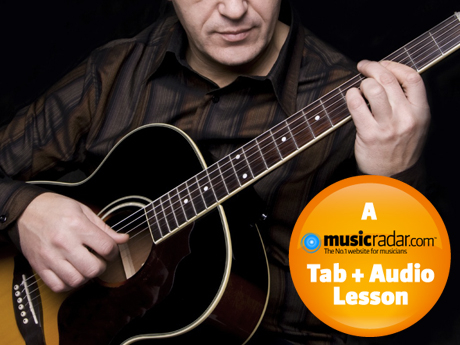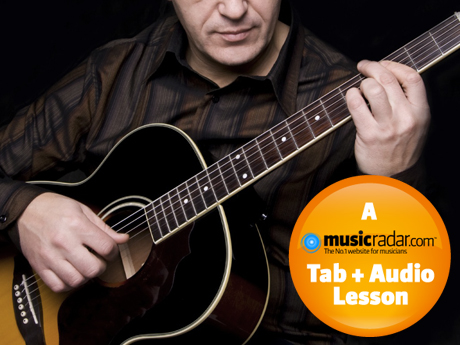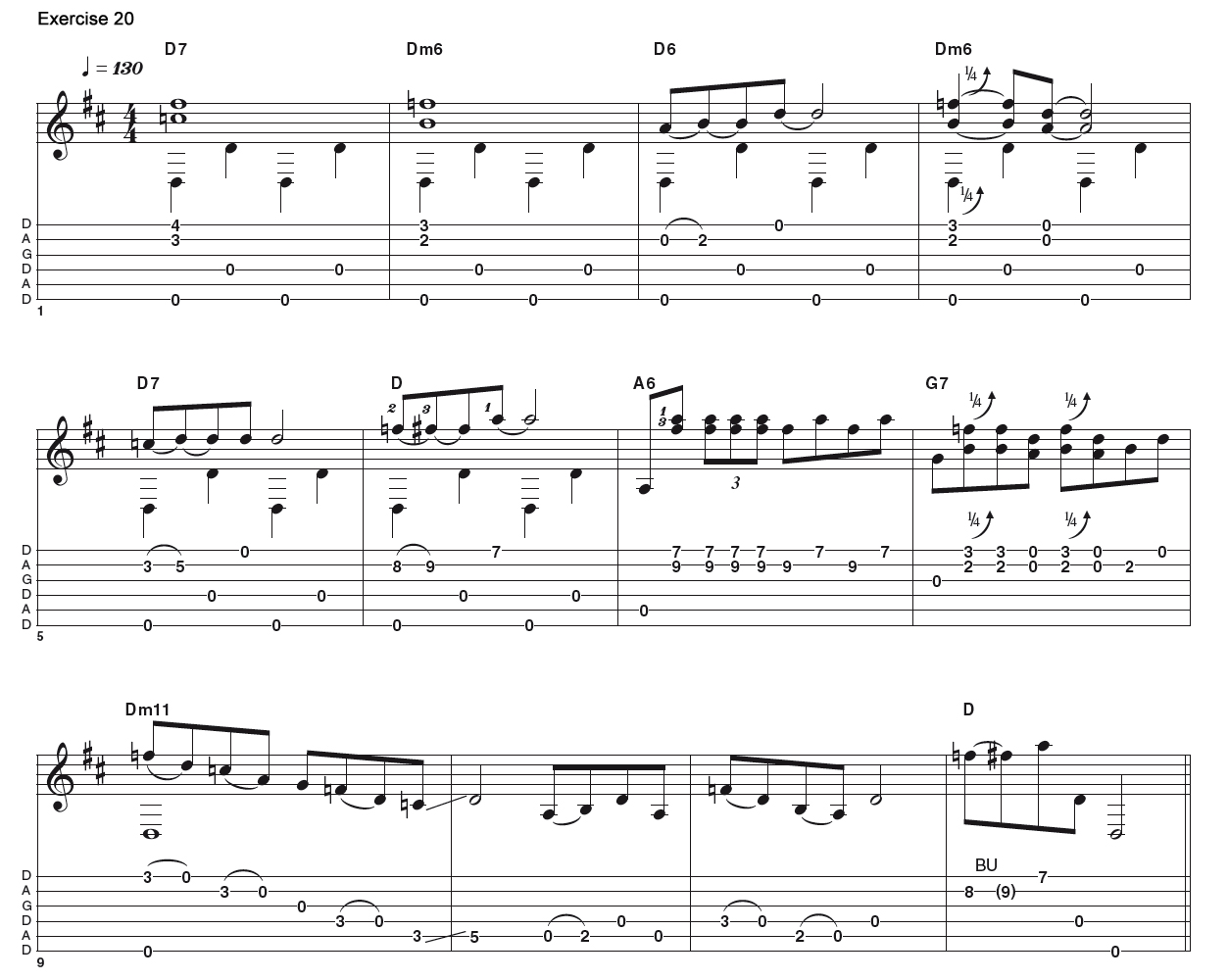How to play fingerstyle blues guitar: part 1


©iStockPhoto.com/zeljkosantrac
In this series of tab and audio lessons, Guitar Techniques magazine's Stuart Ryan takes you through a gigantic acoustic method for playing fingerstyle blues. This lesson is part one in the series - check out part two here and stay tuned for parts three, four and five!
Part 1: Self-accompaniment in DADGAD tuning
In this first series of exercises, we are going to take a look at how a repeated bass line is combined with some common rhythms to create the illusion of two guitars playing simultaneously.
You will find some of the rhythms very straightforward to play whilst others may be a little more taxing. Try these at various tempos to get a different feel each time. We are in DADGAD tuning here - alternative tunings are very common in blues styles and DADGAD is an easier one to work with initially. The main advantage here is that we have an octave from the open sixth string D to the open fourth string D and that facilitates our alternating bass pattern.
Audio (for exercises 1 - 8):
Exercises 1 and 2
Tab (click to enlarge):

Ex 1: Here is an example of the alternating bass; both notes should be plucked with the picking hand thumb and you have the option of using palm muting or letting the notes ring - in the case of the latter you have to be wary that they don't sound too loud over the ensuing chords...
Ex 2: Now a simple fragment of a chord is added with a semibreve rhythm - hold each chord for four beats against the bass line that is played on beats 1, 2, 3 and 4. The chords can be played with i and m or m and a on the picking hand.
Want all the hottest music and gear news, reviews, deals, features and more, direct to your inbox? Sign up here.
Audio (for exercises 1 - 8):
Exercises 3 and 4
Tab (click to enlarge):

Ex 3: The chords become minims and are sustained for 2 beats...
Ex 4: Now we have a crotchet rhythm so each chord is played with the bass line, a little more work but easy to keep your place!
Exercises 5 and 6
Tab (click to enlarge):

Ex 5: Here we are playing '1 and 2 and 3 and 4' whilst the bass line is only played on the beat underneath. More work for the picking fingers!
Ex 6: Ouch! Sixteenth-note chords against the bass line - count these as '1 e and a 2 e and a... etc' against the steady pulse provided by the bass notes.
Exercises 7 and 8
Tab (click to enlarge):

Ex 7: Things get a little harder now - the triplet rhythm has an even count of 1 and a 2 and a...etc' over the solid 1, 2, 3, 4 of the bass line. Essentially you have three evenly spaced chords for each beat so you have to make sure your timing is very exact. This is one of the biggest blues clichés around!
Ex 8: And the trickiest of the lot - crotchet triplets. Now you have to squeeze six notes into the space of four over the top of that insistent bass line on the beat! This is a tricky one to count but I always think of counting an even three-note syllable for every two beats - my choice is 'Van- Ha-Len'!
Exercises 9 to 16
Tab (click to enlarge):




Ex 9-16: Let's bring a subtle twist to the bass line. Instead of the repeated open sixth string to open fourth string pattern we are now alternating between sixth and fourth, and fifth and fourth strings - it's a simple change but can cause some headaches when you start playing the chord on top, so get the picking hand thumb on autopilot on the bass alone before you add in the chords!
Audio (for exercises 17-19):
Exercise 17
Tab (click to enlarge):

Here is a more 'real world' example - the bass line remains constant but over the top we have those double-stops phrased with quarter note bends and shifting rhythms throughout.
Exercise 18
Tab (click to enlarge):

Another more authentic idea - single-note solo lines are played on top of the bass line (which also moves) followed by double-stops with quarter note 'blues curl' bends. When picking the single-note lines you can use alternating picking hand fingers on the same string - you could also try employing pulls -offs. There is also a move up to the 12th fret and back down to the open position which will require some fleet fret hand work!
Exercise 19
Tab (click to enlarge):

This one's similar to the previous exercise but now you have to contend with playing some of the single notes off the beat...
Exercise 20
Audio:
Tab (click to enlarge):

And finally a 12-bar blues in DADGAD which employs all of the above principles. Watch out for combining hammer-ons, pull-off s and bends, all of which must be executed in time over the bass notes.